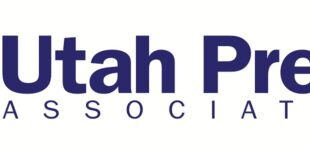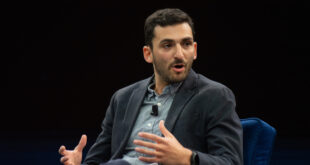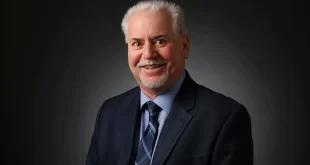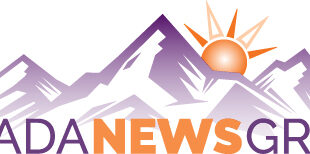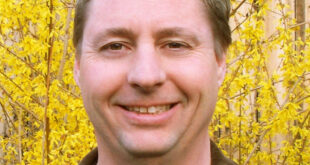Published for delegates to the September 1998 Reno convention of the National Newspaper Association and Nevada Press Association.
By Kent Lauer
On Aug. 10, 1924, eight Nevada editors and publishers met at the Lander County Courthouse in the central Nevada town of Austin.
Representing newspapers from Elko, Tonopah, Austin and Fallon, the group held a preliminary meeting that would lead to the birth of the Nevada Press Association. Their task: The “establishment of another association of the state’s newspapers and newspapermen for the advancement of the business, the profession and for the welfare of the members,” according to a brief history of the Nevada Press Association’s founding.
Before the Nevada Press Association came along, organizations of the state’s newspapers had been born over the years, but they all died. Nevada newspapers, it seems, spent a lot of time fighting with one another instead of cooperating, according to accounts.
One such group reportedly was the Nevada Editorial Association, made up of 13 newspapers. Its first gathering was held in Reno in 1911.
The Nevada Press Association, however, avoided fatal internal squabbles, having lasted now for 64 years. At the association’s preliminary meeting in Austin in 1924, the cooperation of the journalism department at the University of Nevada was sought. Doug Tandy of the Reese River Reveille was elected temporary president and Claude Smite of Fallon Eagle temporary secretary.
According to the minutes of the meeting, discussions were held on sever subjects:
“Reasons why the state printing office should be abolished. Urgency for organizing to protect Nevada newspapermen against legislation inimical to their interests. Exchange of news among Nevada newspapers. Plans for effecting a permanent organization. Value to the reading public of publishing Nevada session laws in newspapers of the state.”
Creating a permanent organization occurred about three months later when the association met in the administration building on the University of Nevada’s campus in Reno.
A total of 15 newspapermen representing 12 newspapers in western and northern Nevada gathered for that Nov. 1 meeting. They elected Harold P. Hale, editor and publisher of the Elko Independent, as the first president. Chris Sheerin of the Elko Free Press called Hale affectionately “Fiddlin’ Fat,” a nickname bestowed by Sheerin’s first boss at the Free Press.
Dues for each member were set at $10 to get the association rolling. Those who attended the earlier meeting in Austin were given a $2 rebate. Under this arrangement, seven of the 15 paid up.
Much of the credit for the association’s longevity goes to University of Nevada journalism Professor Alfred Higginbotham, affectionately known as “Higgy.” The Nevada Press Association, one member recalled, was “Higgy’s baby” from its early years until 1967 when illness forced him to quit the association’s caretaker.
The association originally met in Reno, particularly during legislative years, to give members “a whack or two at the legislators,” one newspaper publisher recalled.
Eventually, the group began moving its annual meetings around the state, from Las Vegas to Elko to Lake Tahoe.
In the late 1930s, Higginbotham instituted the association’s most cherished awarded, the Silver Makeup Rule Award, for dedication to the newspaper industry in Nevada. The award has been given to 33 people.
The association took a major step forward in 1995 when it hired Kent Lauer as its first full-time executive director and opened a new office in Carson City. Lauer is a former journalism professor and newspaper reporter.
The association represents 11 daily newspapers and 31 weekly newspapers throughout the state and the Lake Tahoe region of Northern California.
“The Nevada Press Association,” according to its mission statement, “is dedicated to representing the common interests of Nevada newspapers, furthering the public’s right to know through an understanding that strong newspapers (protected by the First Amendment) are the cornerstone of a democratic society, promoting a closer fellowship within the newspaper fraternity, encouraging the elevation of journalistic standards and promoting the value of newspaper advertising.”
 Nevada Press Association The best in Nevada journalism since 1924
Nevada Press Association The best in Nevada journalism since 1924
